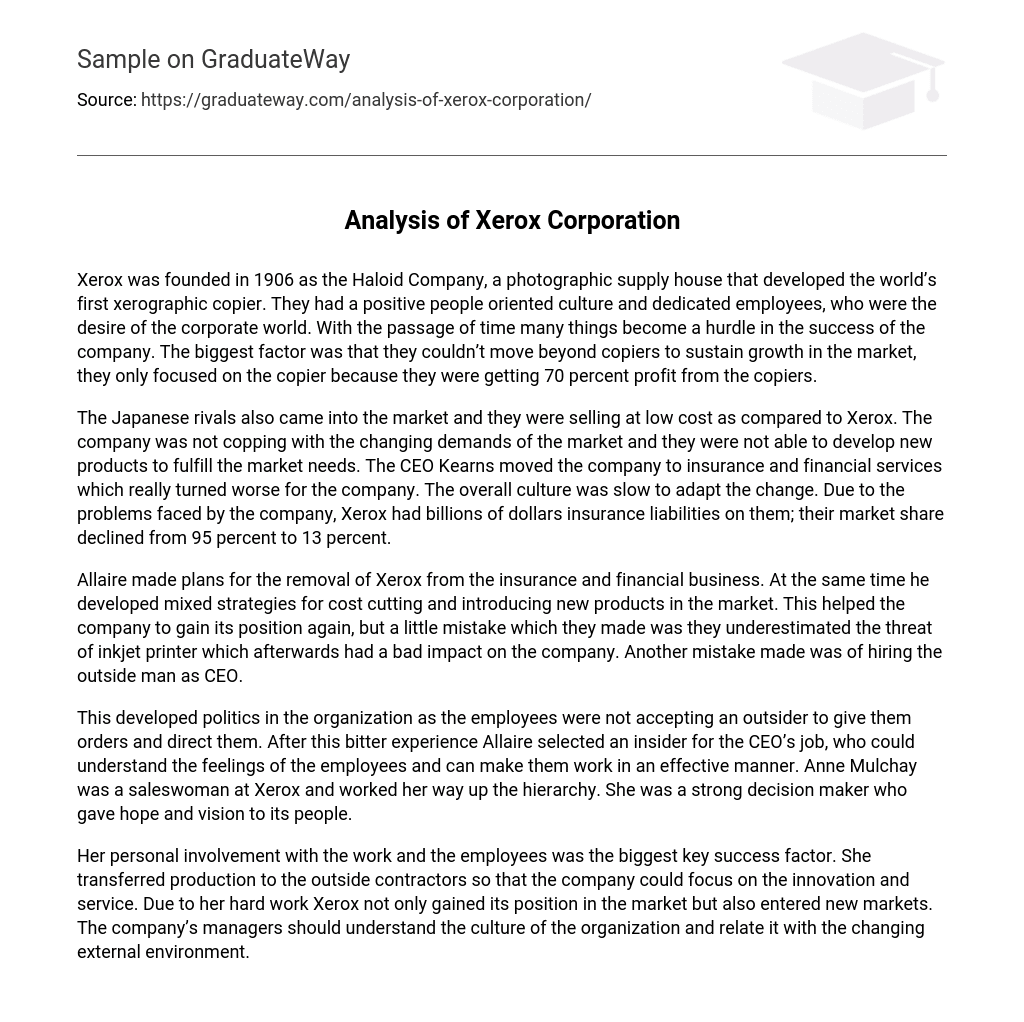Xerox, originally known as the Haloid Company, was established in 1906 as a supplier of photographic materials. It gained prominence for introducing the world’s first xerographic copier. The company had a strong emphasis on its people and fostered a culture highly valued by its dedicated employees. However, over time, several challenges hindered Xerox’s progress. One major obstacle was its inability to diversify its product offerings beyond copiers, which limited its ability to sustain market growth. This singular focus on copiers stemmed from their significant contribution of 70 percent to the company’s profits.
The market was entered by Japanese competitors who sold their products at a lower price compared to Xerox. Xerox faced difficulties in keeping up with the evolving market demands and failed to introduce new products that met customer needs. CEO Kearns made the decision to redirect the company’s focus towards insurance and financial services, which ultimately had detrimental effects on the company. The overall culture of the company was resistant to change, leading to further challenges. Consequently, Xerox encountered billions of dollars in insurance liabilities and experienced a significant decrease in its market share from 95 percent to 13 percent.
Allaire developed plans to remove Xerox from the insurance and financial business, while simultaneously implementing strategies for cost cutting and introducing new products into the market. These initiatives helped the company regain its position. However, two mistakes were made: underestimating the threat of inkjet printers, which ultimately had a negative impact on the company, and hiring an external CEO.
Due to the employees’ resistance towards taking orders from someone unfamiliar with the organization, Allaire opted for an internal candidate as CEO. This decision aimed at choosing someone who could understand and motivate the employees effectively. Anne Mulchay, a former saleswoman at Xerox who had climbed up the corporate ladder, was selected. Known for her strong decision-making skills and ability to inspire confidence and ambition in her team members, she was deemed suitable for the role.
Her direct involvement with both the work and the employees was the primary factor contributing to success. By outsourcing production to external contractors, she enabled the company to concentrate on innovation and service. As a result of her dedication, Xerox not only established its position in the market but also expanded into new markets. It is crucial for the company’s managers to comprehend the organizational culture and its alignment with the evolving external environment.





